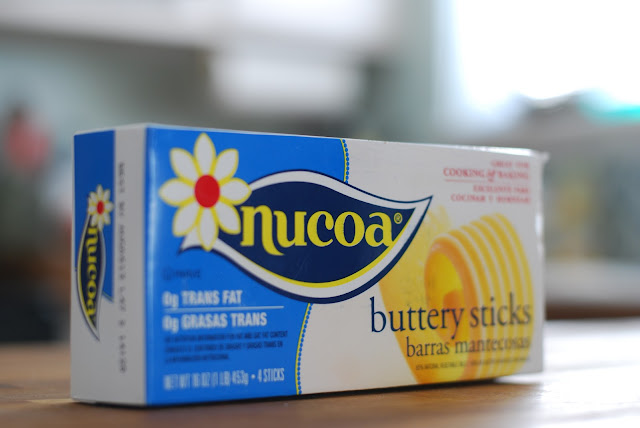Recipe adapted from
here.
When we had my daughter's allergies tested the first time (she was about 9 months old), the test came back positive for wheat. Which was weird, because we had been giving her wheat with no apparent reaction in the past. So the dr. told us to go ahead and keep feeding it to her.
Now, let me tell you something about me. I looooove bread. Seriously, if someone were to ask me for my favorite food... it would probably be bread. So the possibility of having a wheat-allergic child was not a pretty thought. But since it didn't seem to be bothering her we kept feeding it to her.
Well, about a month ago (nearly a year from her first allergy test) she started getting hives from spaghetti (her favorite food, of course). And we were like, "what?!" It turns out it was the wheat AND the tomato sauce, but that's a story for another day.
And has led me into the wonderful world of wheat-free baking. Not gluten-free baking (though they often coincide). No, she's allergic to the specific proteins in the wheat... not just the gluten. So thankfully, I can use things like oats with no worries (note: pure oats are always gluten free. the problem with oats is that they are manufactured on shared equipment, or grown next to a wheat field and become contaminated).
But for today, here is one of my first attempts into wheat-free baking. It didn't turn out half bad, but I have to tell you. When you use rice flour exclusively, the result is gritty. Don't expect the texture to be just the same as it would be if you were using wheat. It's just a whole different thing. But that doesn't mean it's bad. It's just different, and something I'm sure will take some getting used to for me. And despite the gritty texture, I had no problem downing 3 of these fresh and warm from the oven.
Wet mix:
3 very ripe medium sized bananas, mashed (about 1 cup)
1/3 c softened dairy free margarine (or vegetable oil, minus a couple tablespoons)
2/3 c sugar
1 TB Ener-G egg replacer + 4 TB hot water, mixed separately before adding to batter (if you don't have this, try adding an extra 1/2 tsp of baking soda, and 4TB of water)
3 TB dairy free milk of your choice (or water)
1 tsp white or apple cider vinegar
Dry mix:
2 c rice flour (brown or white)
1 tsp baking powder
1/2 tsp baking soda
1/2 tsp salt
Preheat oven to 350 degrees. Combine mashed bananas, softened margarine/oil, sugar, egg mixture, milk and vinegar. Mix well. In a separate bowl, combine dry ingredients, then add to wet mixture and stir until smooth. Grease/spray 12 muffin tins, and fill each cup about 2/3 full. Bake at 350 for about 20 minutes or until tops are golden brown and a knife inserted into the center of the biggest muffin comes out clean. Enjoy!







